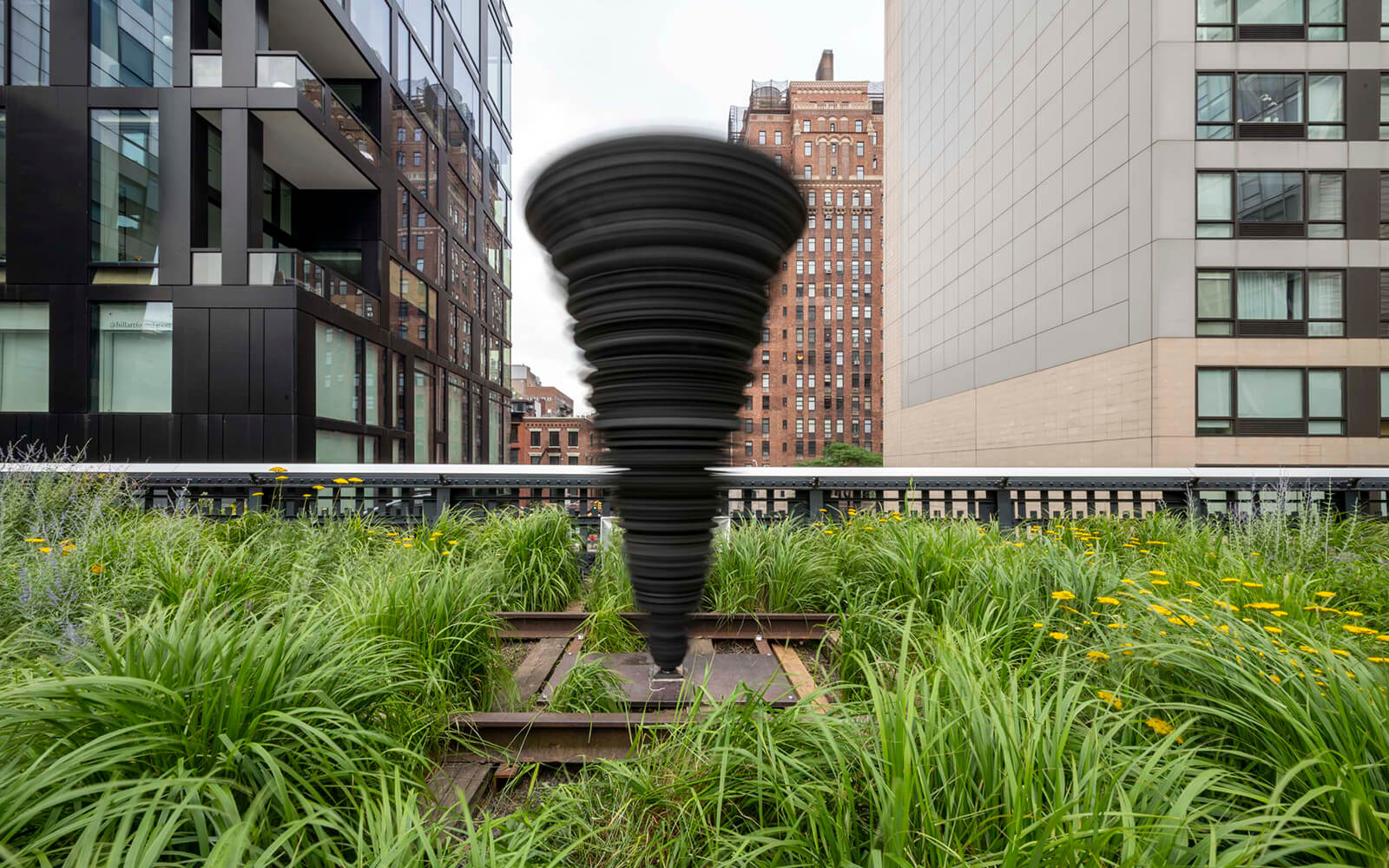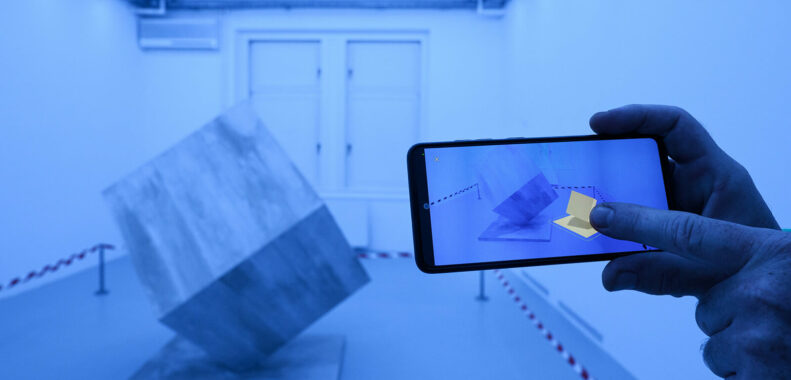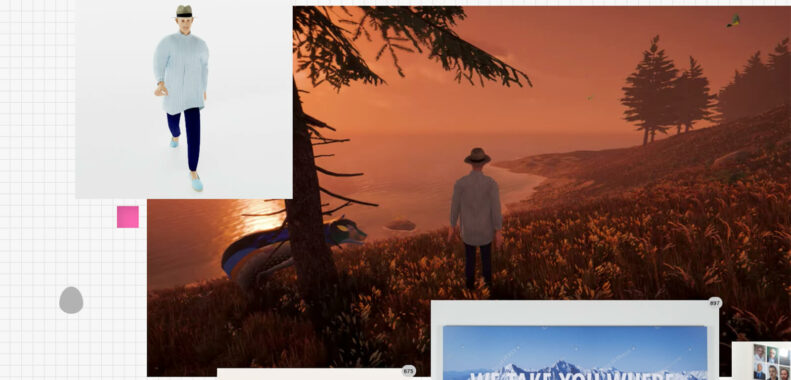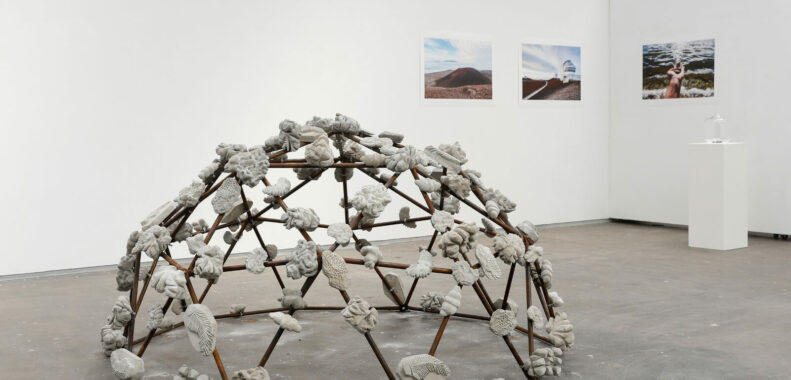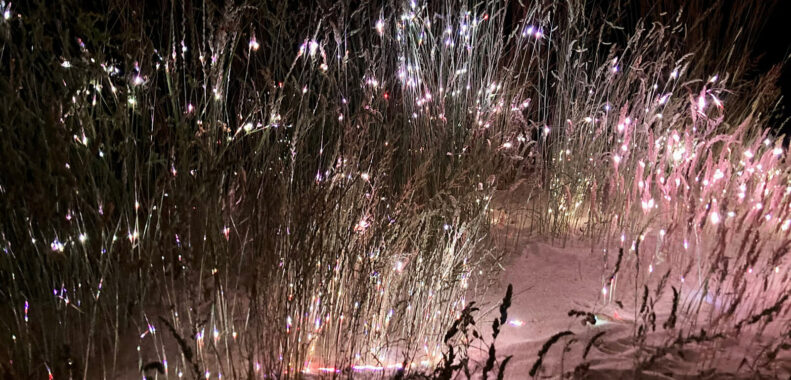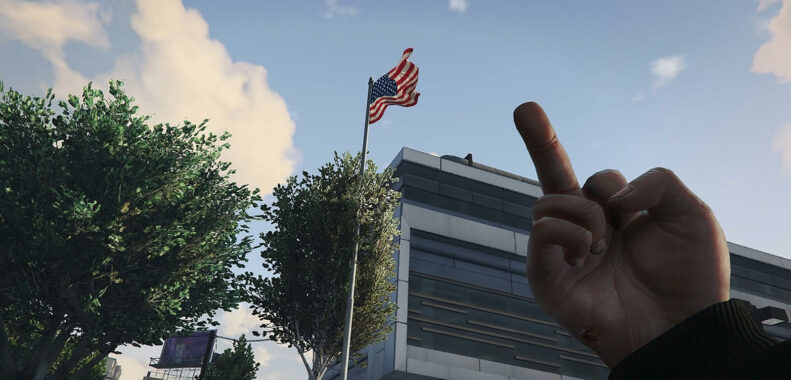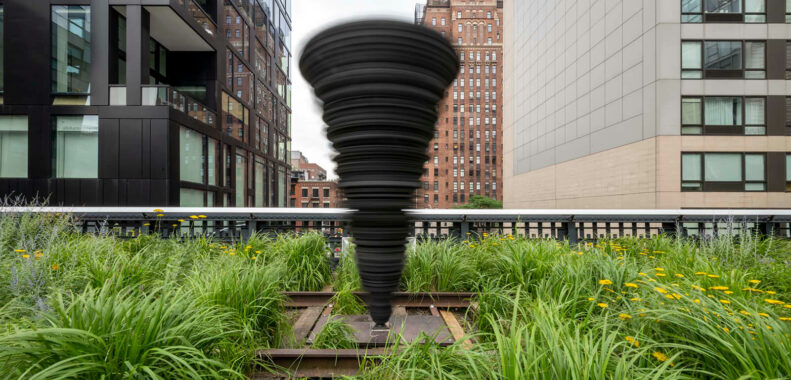All
Igor Štromajer’s hybrid installation ƒ(x)=ax³+bx²+cx+d*, realised together with German art historian and curator Sakrowski, opens at the Aksioma project space in Ljubljana. The titular cubic function is expressed in a 1 m³ concrete cube balancing on one of its vertices, as did the cube in the iconic GIF animation the Slovenian net artist (also known as intima) created in 1996. Through AR, the two can exist together (image), traversing materiality, technologies, and time.
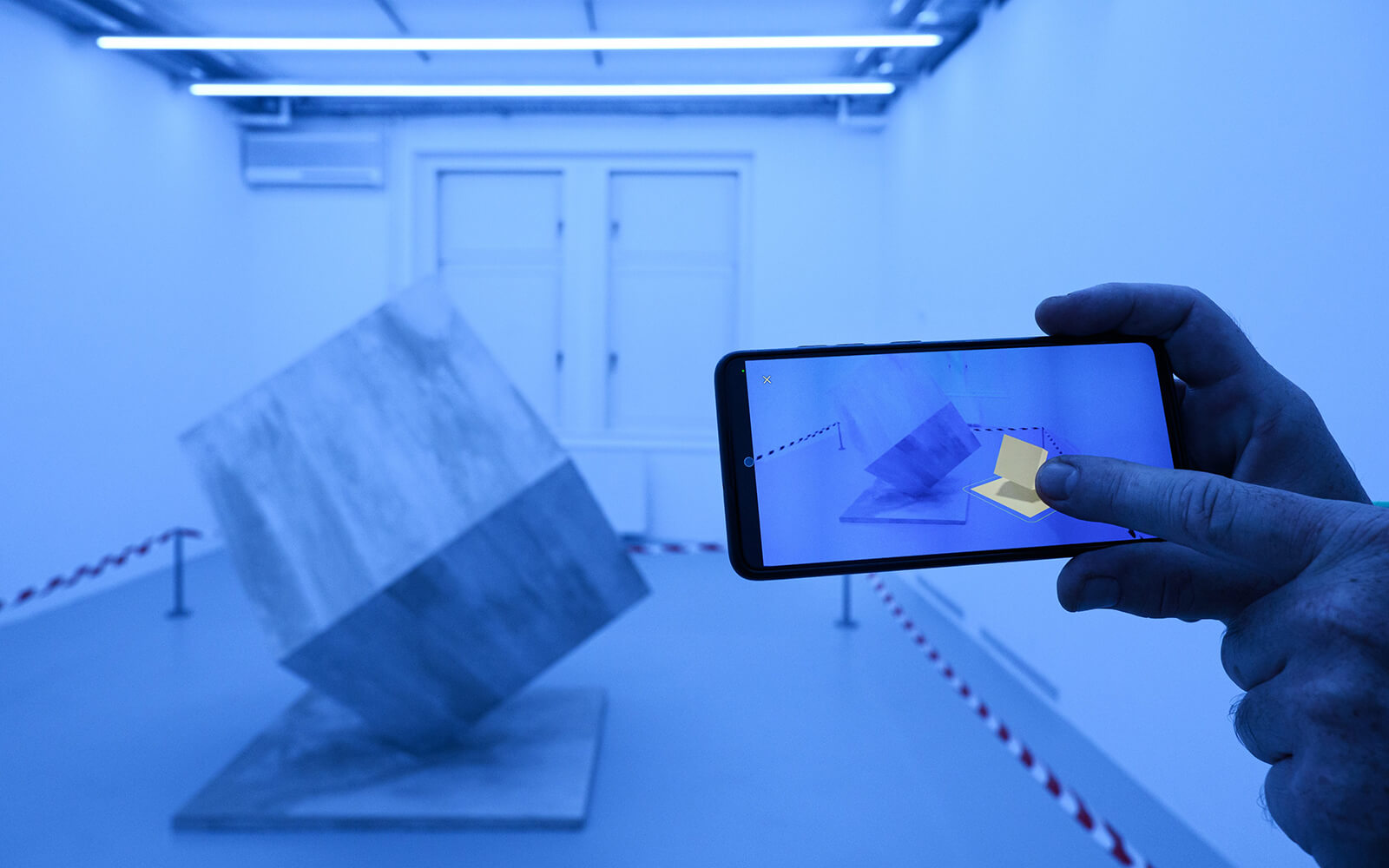
Accepting Loss is Vital to Digital Art Conservation, Annet Dekker Says
“It’s important to accept loss, to accept decay, and to let go. We lose things constantly in computational culture, and it’s not necessarily a bad thing.”
Out Now: In “Northern Sparks,” Michael Century Reveals How Expo 67 and New Cultural Policies Kicked off a Golden Age in Canadian Art and Technology
Michael Century
Northern Sparks
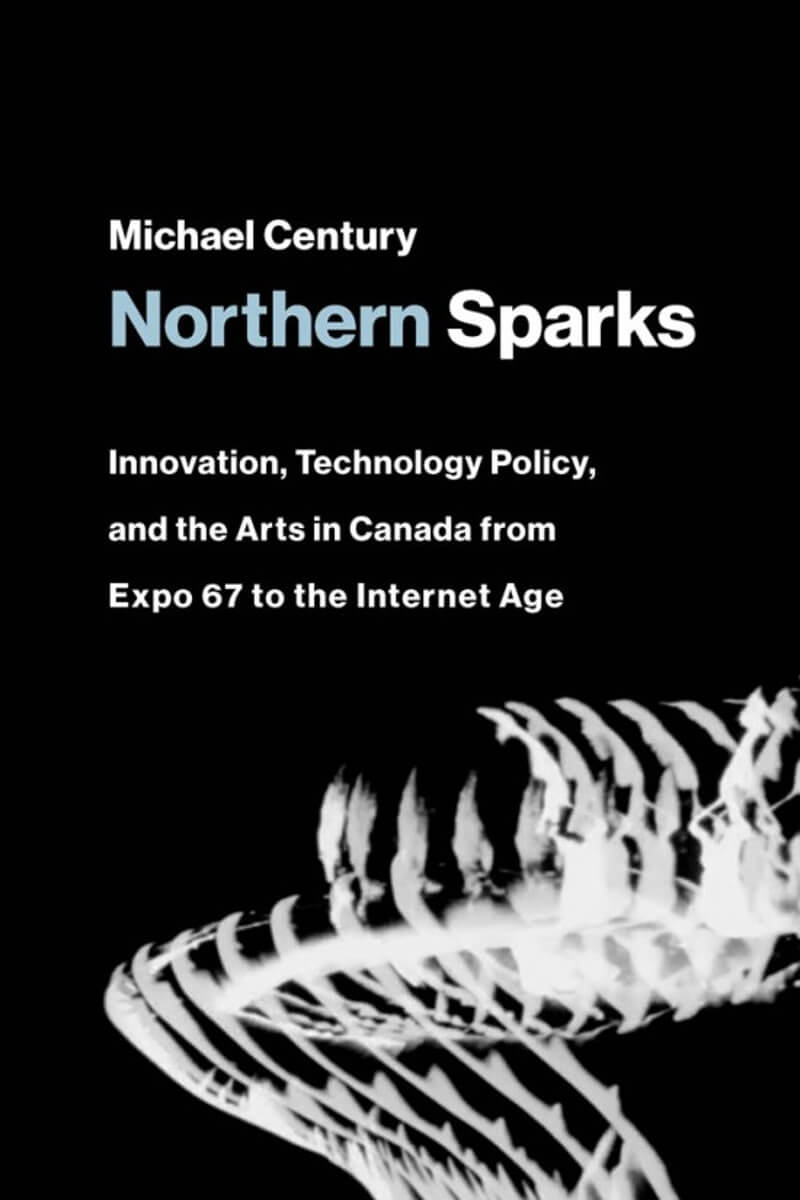
How Op Art Icon Bridget Riley Turned A Life Around
“He was homeless for quite a long time during his life, and he really struggled with alcoholism. He had no interest in art at all, and then one day he went into an exhibition to get out of the rain.”
An intimate view into the process of automating his artistic practice, Jonas Lund’s online exhibition “Walk with Me” opens on distant.gallery. The show collages early and recent experiments of “wrapping his distributed identity, personality traits, and musical interludes,” layered with instructions to make his artworks, into a single glorious browser canvas that the Swedish artist compares to “being inside the artist’s brain itself.”
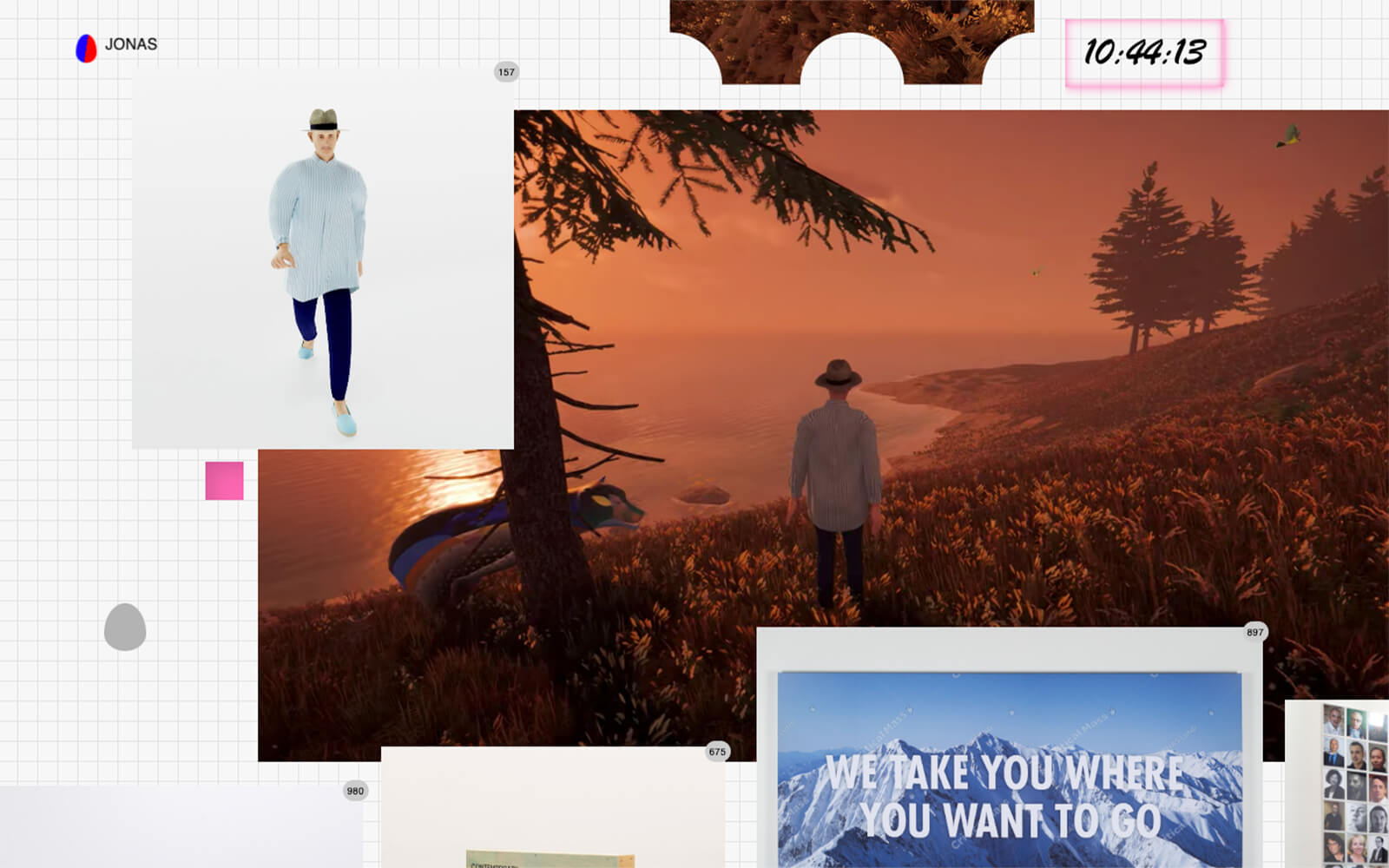
Auriea Harvey’s Digital Sculptures “Live in a Future that Never Ages”
“Digital sculptures live in the now, in a future that never ages. The physical object is the archive. That object was digital, but now it is real, pinned to a certain moment, and it can travel through different times and contexts as long as it exists.”
A critique of how humanity disrupts Earth’s hydrologic cycle, “Still Waters Run Deep” opens at Nieuw Dakota, Amsterdam. Curator Marlies Augustijn gathers works by Phoebe Boswell, Patrick Hough, Kasia Molga, Hannah Rowan, and others that explore how water “inextricably interconnects everything.” Deep Time Agency’s Concrete Reef (2021), for example, memorialises the region’s prehistoric ocean with a geodesic array of concrete fossil casts.
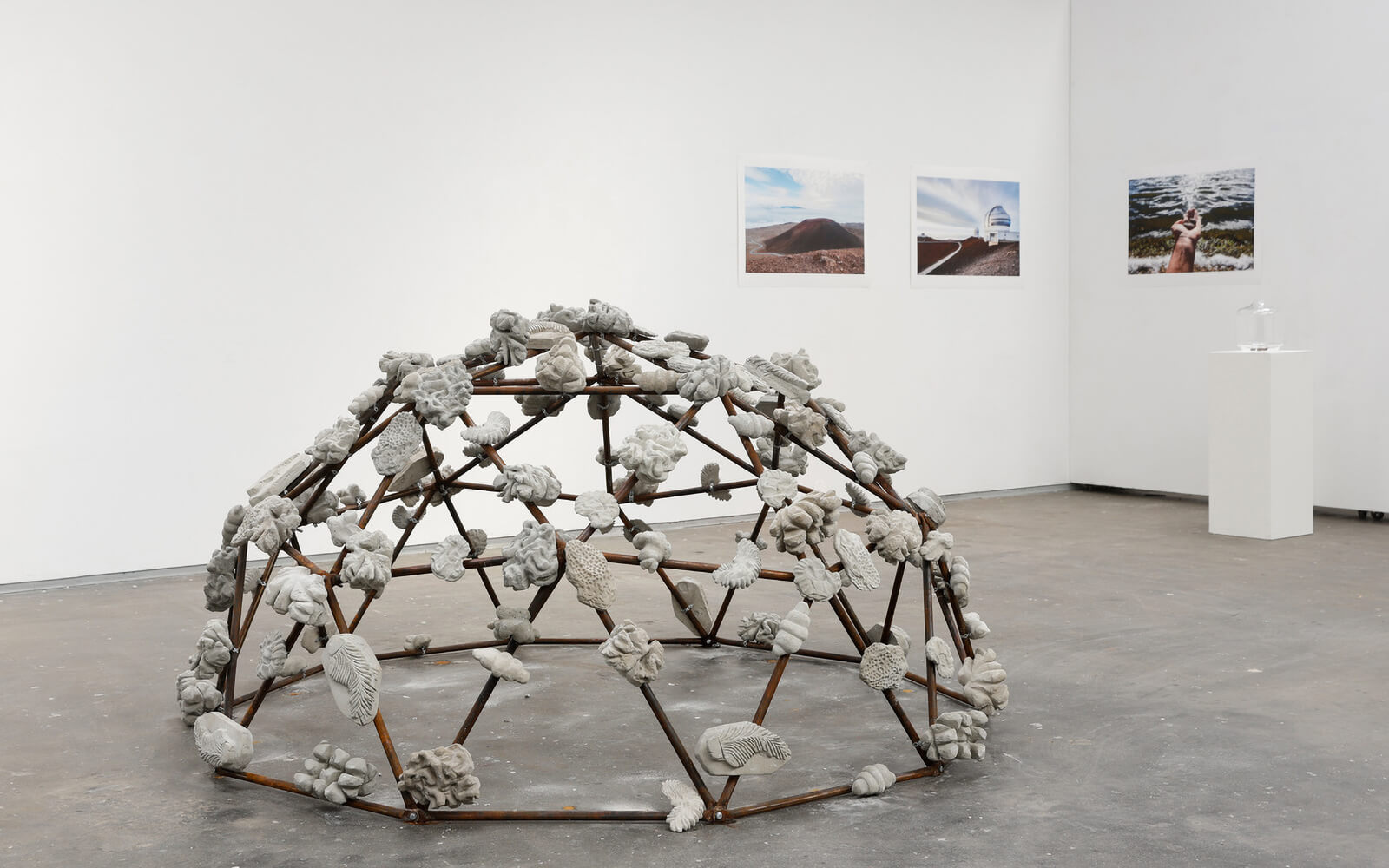

MOSTYN Invites 17 Artists to Share Their “Temporary Atlas” and Map Personal Experience and Perspectives
“Temporary Atlas” opens at London’s MOSTYN, ‘mapping’ personal experiences and perspectives with works by Manon Awst, Ibrahim Mahama, Kiki Smith, and 14 others. Of note: Oliver Laric’s erudite video essay Versions (2010, image) “that muses on the manipulation and re-appropriation of images throughout history” is featured, as is Jeremy Deller’s The History of the World (1997-2004), which diagrams improbable connections between the social forces that begat acid house and brass band music.

Joanie Lemercier’s latest solo exhibition opens at Le Tetris in Le Havre, Normandy, France. The show gathers recent works (Slow Violence, Brume, Edges) and new creations, capturing the French artist’s sustained interest in light and activism. In Prairie, a new collaboration with curator Juliette Bibasse, the two change focus from big to small: tracing mundane roadside grasses with small lasers, they shed light on beauty that is often overlooked.
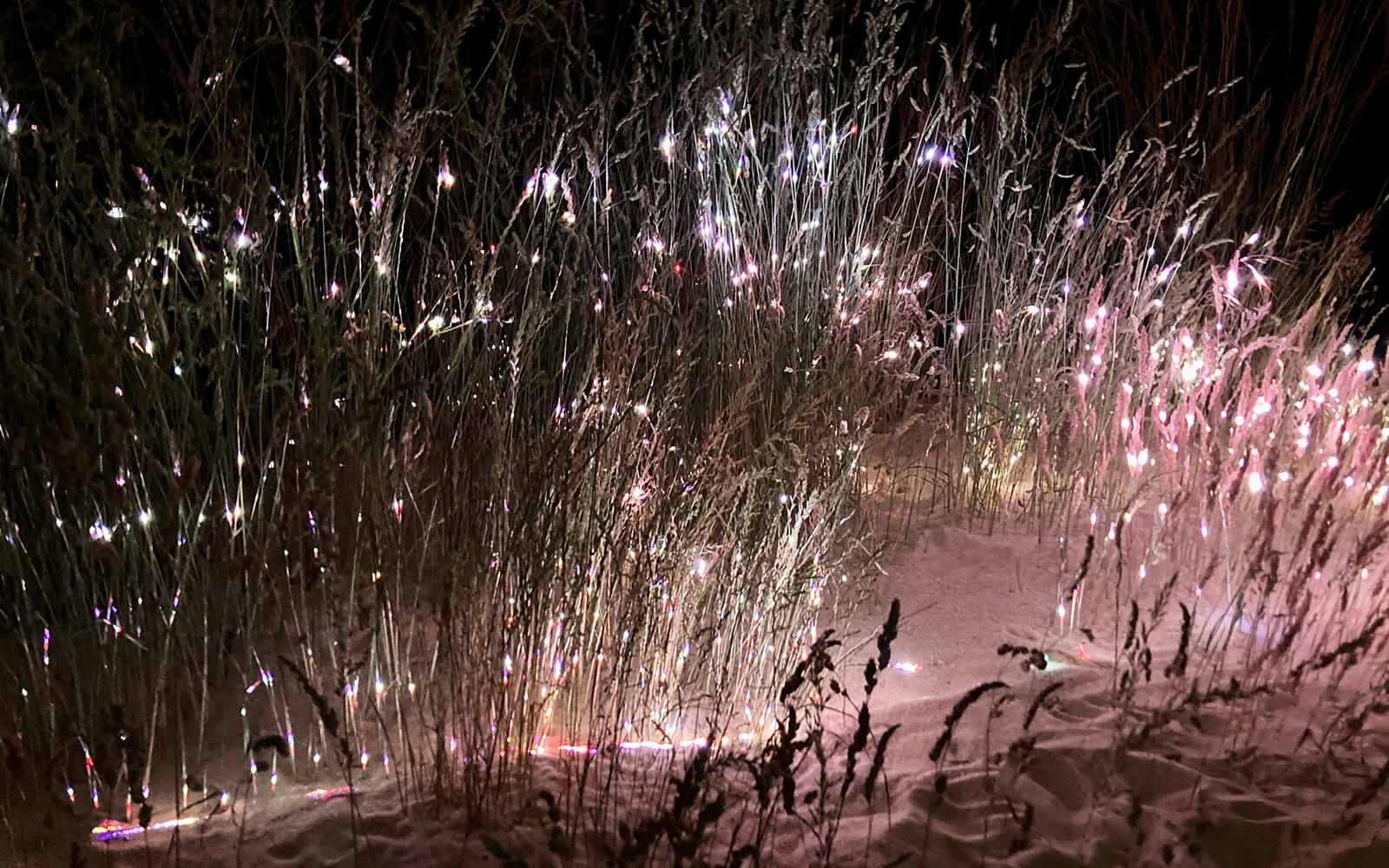
Kimberlé Crenshaw on the Overturning of Roe v. Wade: “The Worst-Case Scenarios Are Coming Home to Roost”
“The worst-case scenarios are coming home to roost. We simply cannot afford to sustain separate, siloed movements; they are coming for every hard-fought civil right won in the last 50 years. WE have to fight back like our lives depend on it. Because they do.”
Out Now: Jennifer Guiliano’s “A Primer for Teaching Digital History” Offers Design Principles for Educators
Jennifer Guiliano
A Primer for Teaching Digital History

Surveillance Capitalism and Climate Calamity Converge in AI Wildfire Detection Pilot Project
A grim sign of the times, surveillance capitalism and “more frequent, larger, and financially ruinous” forest fires converge in a Portland General Electric pilot project. In the initiative, a network of 5 (soon to be 22) cameras are deployed across rural Oregon, collecting footage that is monitored 24/7 by proprietary wildfire detection AI, which can distinguish “benign clouds from troubling smoke” with 90% accuracy; remote workers on standby protect against false positives.
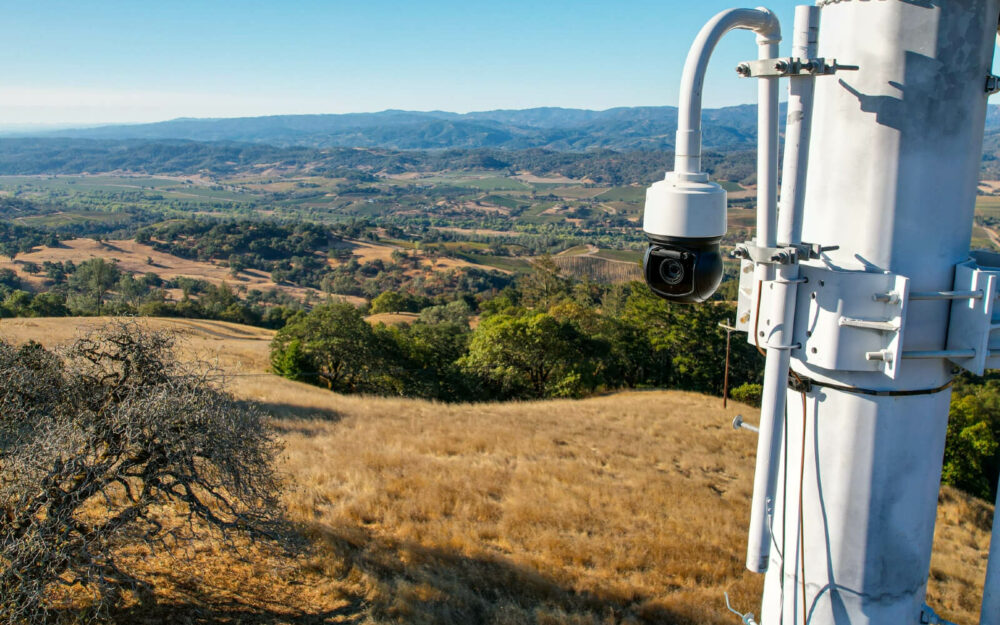
Crypto Skeptic David Gerard Describes Web3 as “William Gibson with a Concussion”
“If we had the Web3 dream world, it would be William Gibson with a concussion. It would be a really stupid cyberpunk hellscape—far dumber than the world we’re actually in.”
iMAL Invites Three Artists to Share “Chronicles from a near Future” and Speculate the Shape of Biodiversity to Come
“Chronicles from a near Future,” a show featuring two installations addressing biodiversity, opens at iMAL, Brussels. Golnaz Behrouznia and Dominique Peysson’s Phylogenèse Inverse (2022, image) draws inspiration from Turritopsis dohrnii (the immortal jellyfish), presenting vitrines of de-evolved “lifeforms with strange anatomies and enigmatic functions,” while Stéfane Perraud’s Sylvia (2022) offers an at times “absurd or conspiratorial” audio narrative about a forest in peril.
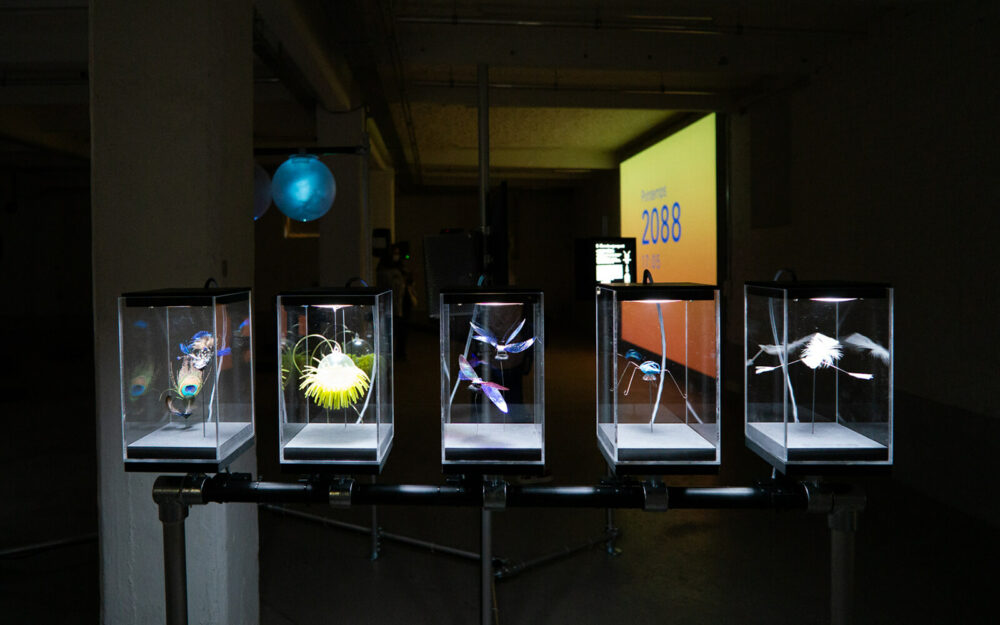
Chris Salter Argues “The Smart City Is a Perpetually Unrealized Utopia”
Taking a wide angle view of the (recent) history of urbanism, artist and researcher Chris Salter publishes an essay arguing “the smart city is a perpetually unrealized utopia” on Technology Review. Starting with architect Constant Nieuwenhuys’ vision for New Babylon (1959-74)—a speculative city and engine of serendipity that helped residents transcend bourgeoisie life—Salter lingers on the potential of that dream, relative to corporate forces that followed (i.e. IBM). Situating the discussion in the moment, he further connects the extractive tendencies of the smart city with the role data is playing with the war in the Ukraine, glibly noting that both the contemporary urban warzone and our idealized sensor-laden city of tomorrow chronically “seem to lack a central ingredient: human bodies.”
Remembering the First Artist-Engineer to Fill a Movie Screen With Pixels
“He was the first man to fill a movie screen with pixels. Now, every movie you see was created on a digital machine.”
After its inaugural showing at Switzerland’s Fotomuseum Winterthur in 2021, an adaption of “How to Win at Photography” opens at The Photographers’ Gallery in London. The group exhibition gathers 30 international artists whose works explore “image-making as play,” from early photography to nascent videogames. Case in point: Roc Herms’ Study of Perspective (2015) series appropriates Ai Weiwei’s eponymous photo provocations in Grand Theft Auto V.
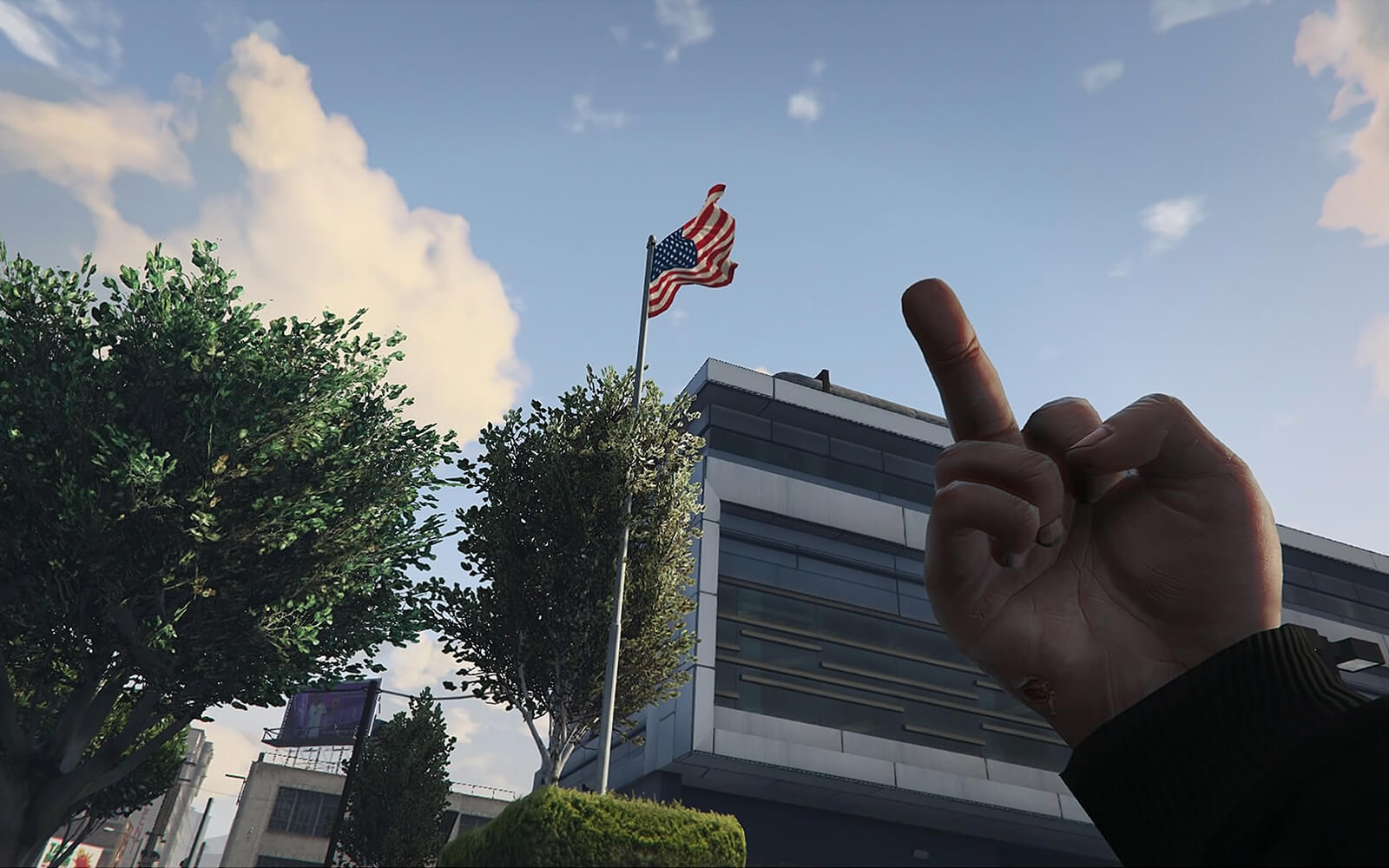
Meriem Bennani’s first public sculpture, Windy (2022), touches down on New York City’s High Line, kicking off the summer season of the High Line Art program. Installed on 24th Street through May 2023, Windy is a tornado-shaped kinectic structure that is made from black foam and spins so fast, its details escape perception. “Inspired by the dynamism and constant movement on the High Line,” the Moroccan artist created a sculpture that “captures and works within this urban energy.”
